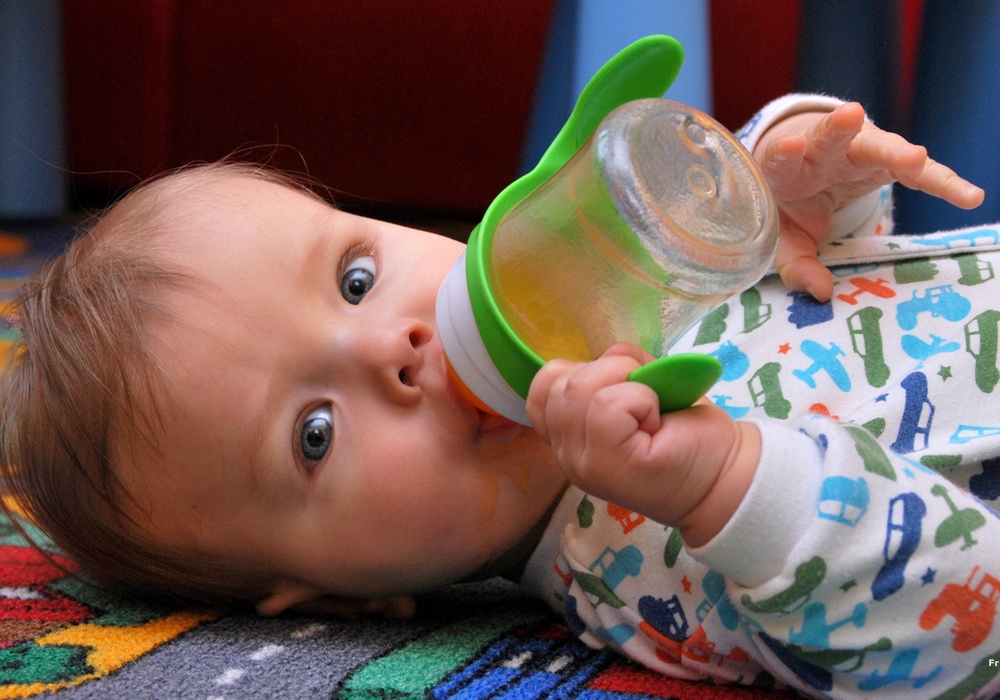A congressional subcommittee investigation into the presence of heavy metals in baby foods has found levels of these metals are far higher than those allowed in drinking water. Part 1 of this two-part series described the kinds of heavy metals — arsenic, lead, cadmium and mercury — found in baby foods, often at high concentrations, and the risks they pose to babies’ brain development, cognitive development and IQ in childhood.
Part 2 details the findings of the Congressional subcommittee on Economic and Consumer Policy and Oversight and Reform’s investigation into heavy metal concentrations in baby food. It lays out how many parts per billion — ppb — of these metals are found in each brand included in the investigation and why, because of the way the foods are made, the levels of dangerous heavy metals recorded in baby foods are often higher than in the individual ingredients themselves.
Not all of the companies and brands that were part of the subcommittee’s investigation into heavy metals in baby foods agreed to participate. As mentioned in Part 1, only the Nurture, Hain and Beech-Nut brands were willing to submit to requests for information. The baby foods examined in the investigation included:Parents cannot avoid baby foods with toxic heavy metals if they don’t have the information or regulation needed to make educated choices.
The report confirms that most baby food manufacturers use a vitamin and mineral pre-mix that also contains heavy metals and raises the concentration of each of the four metals considerably:No federal standard exists for lead levels in baby food, though there are levels for bottled water (5 ppb), fruit juice (50 ppb) and candy (100 ppb). In some cases, the levels are triple that, or more.
-
“[N]aturally occurring toxic heavy metals may not be the only problem causing dangerous levels of toxic heavy metals in baby foods; rather, baby food producers like Hain are adding ingredients that have high levels of toxic heavy metals into their products, such as vitamin/mineral pre-mix.
Over 25 percent of HappyBABY foods that were tested contained more than 100 parts per billion, the company’s threshold for arsenic. Hain used ingredients in its products that contained as much as 309 ppb. Test results for Beech-Nut revealed that they used ingredients — with arsenic amounts as high as 913 ppb.
No federal standard exists for lead levels in baby food, though there are levels for bottled water (5 ppb), fruit juice (50 ppb) and candy (100 ppb).
Beech-Nut used ingredients in their baby foods that contained as much as 344 ppb cadmium. Some of Hain’s ingredients had over 100 ppb cadmium. Sixty-five percent of Nurture’s products tested greater than 5 ppb cadmium. Gerber does not test all of its ingredients for cadmium. Even if an ingredient is tested and has high levels of cadmium, Gerber still uses it. Seventy-five percent of Gerber’s carrots contained cadmium in excess of 5 ppb.
The report identifies at least two problems that contribute to the levels of toxic heavy metals in baby foods. First, the FDA has not addressed maximum thresholds for these metals in baby foods, so there are not even standards to go by. Second, the baby food industry is self-regulated, setting their own internal standards for levels of heavy metals in their products.
The self-imposed standards of manufacturers are too high, according to the investigation, and, more importantly, often ignored since there are no regulations that need to be followed. Baby foods have been sold even after internal testing found products that exceeded a company’s own maximum thresholds.
Products tested during the investigation included formula, cereals and juices, as well as pureed foods for infants, pureed mixed foods, fruit and vegetable puffs, rice cakes, and other ingredients like spices and grains that go into mixed ingredient products.Rice was consistently at or near the top of every list of dangerous foods reviewed in the investigation. The report found it may not be suitable for use in baby foods.
Rice was consistently at or near the top of every list of dangerous foods reviewed in the investigation. It may not be suitable for use in baby foods, according to the report.
The investigative report recommended:
These recommendations require the FDA to set standards and initiate regulations. Baby food manufacturers will have to make voluntary changes. Most manufacturers only test ingredients used in the making of baby foods, not their finished products, and this can underestimate the true levels of toxic heavy metals.The report identifies at least two problems contributing to the levels of toxic heavy metals in baby foods. First, the FDA has no thresholds for these metals in baby foods, so there are no standards to go by. Second, the baby food industry is self-regulated and sets their own standards for levels of heavy metals in their products.
Parents cannot avoid baby foods with toxic heavy metals if they don’t have the information or regulation needed to make educated choices.
Parents tend to trust that the products they are feeding their infants and toddlers are safe and nutritious, though some parents have more confidence in the wholesomeness of organic baby foods. Unfortunately, these are just as likely to contain toxic heavy metals.
While the report is understandably concerning to parents, feeding a child commercial baby food is not a guarantee that they will develop problems as a result, but it could increase the risk. Factors such as genetics and environmental influences may also come into play.
There are ways parents can reduce their infant or toddler’s exposure to toxic heavy metals in baby food:
Feeding your little one a variety of foods naturally limits their exposure to heavy metals present in any one food, and it also helps them learn to like a variety of foods.
You can read the entire report, “Baby Foods are Tainted with Dangerous Levels of Arsenic, Lead, Cadmium, and Mercury,” here.





